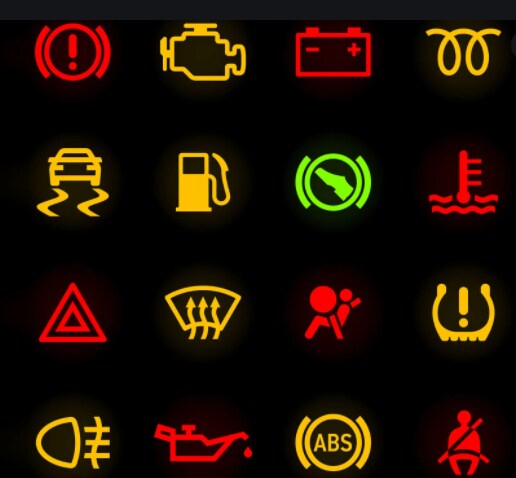
You’re happily driving down the road enjoying your day until you see a light turn on across your vehicle’s dashboard. You may be someone that meets this with panic or confusion, but understanding what these warning lights mean will not only help ease your mind during these situations, but will also help your vehicle stay in good condition. If you want to get the most out of your vehicle, then follow this short guide and learn how to decipher what each dashboard light means.
Do you have a warning light on and don’t know what to do about it? Schedule a service appointment with our expert service technicians, and we’ll help you make sure your vehicle is in tip-top condition! Click here to schedule a service appointment!
Check Engine Light

To start off, we’ll begin this guide with the worst. The check-engine light is the one car owners never want to see. This light takes the shape of a silhouetted engine, or can even show up as a “CHECK ENGINE” message. The reason this warning light can be scary is because of its ambiguous nature. It can relate to anything dealing with your vehicle’s motor and emissions system. Troubles range from easy fixes like loose wires, to more serious issues with the engine itself. The best action to take when you see this light turn on is to not panic, but also don’t ignore it either. If your vehicle seems safe to drive, simply bring it in for service so that experts can run a diagnostic test to find the source of the problem. If your vehicle doesn’t feel safe and begins showing signs of operating failure or strange noises, then pull over as quickly and safely as you can and call for a tow.
Battery Light
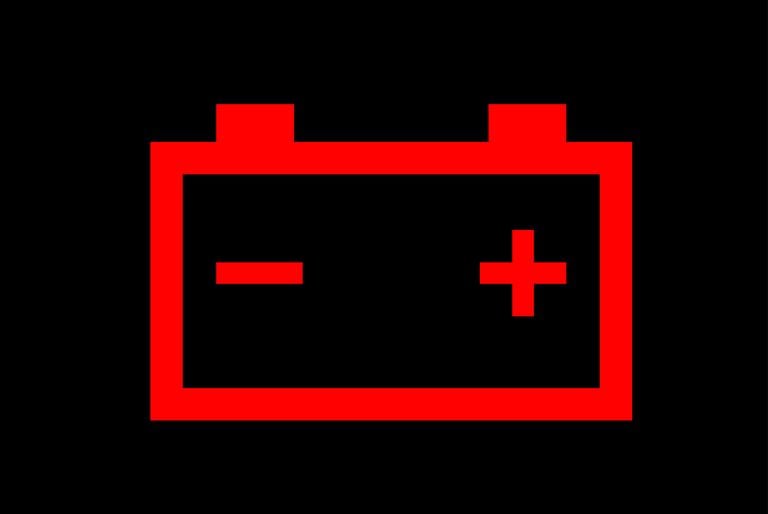
The battery light is straight-forward and takes the shape of the very thing that needs attention - the battery. When this light turns on, it could mean that there are issues with your vehicle’s electrical wiring, alternator, or battery cells. The best thing to do is to take your vehicle in for service as soon as you can, or you might risk not being able to turn your car back on. To avoid having to have your vehicle jumped, go to the nearest service center as soon as you see the battery light turn on.
Coolant Temperature Light

This one looks like a thermometer that’s being dipped into some water. When this light turns on, it can mean you have a broken water pump, low coolant levels, a leaking coolant hose, or that your radiator is damaged. As a rule of thumb with all warning lights, do not ignore this because it could mean serious issues and can cause damage to your vehicle. Driving an overheated vehicle risks permanently damaging it and is unsafe to drive.
Transmission Temperature Light
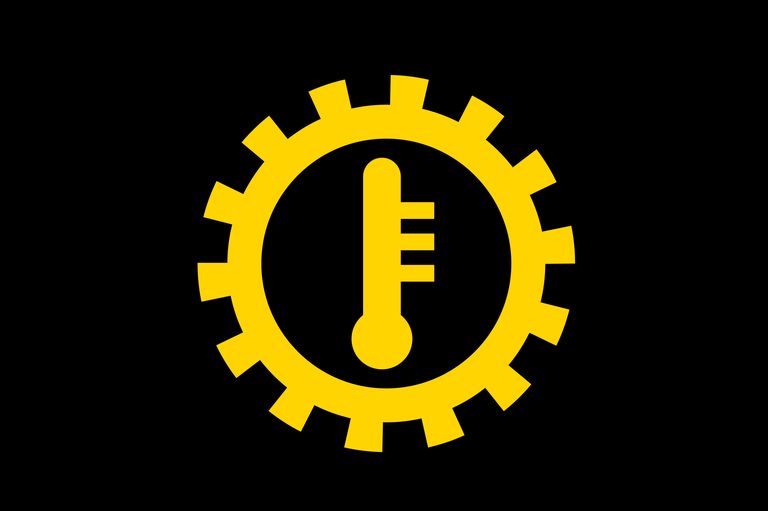
This light looks like a thermometer inside a gear cog. When this light turns on, it means pieces of your gearbox are reaching critical levels. It could mean there has been excessive wear and tear on your inner workings, which can lead to a damaged transmission. As always, do not ignore this light and bring it into a service center near you.
Oil Pressure Warning Light
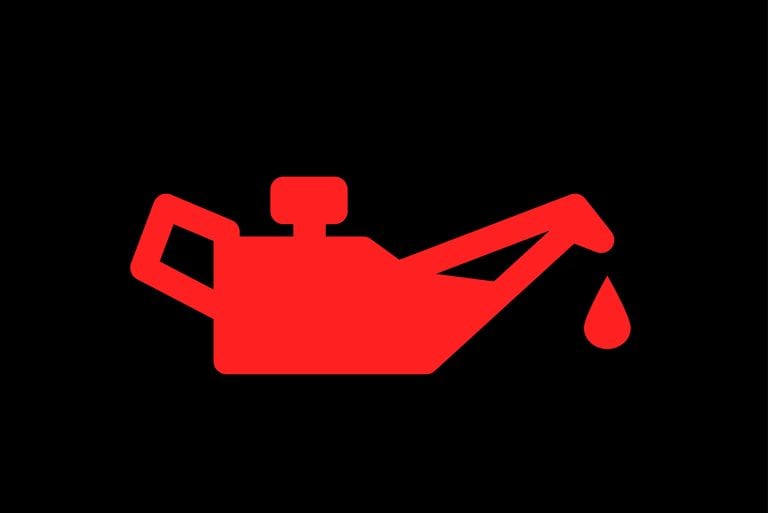
This light looks like an oil can that has a drop of oil leaking from the tip. This could simply mean that your vehicle is due for an oil change or needs to be topped off. More serious issues could be a leak in the engine or worn out parts. One thing is for certain, driving an extended period of time with your oil pressure light on is a great way to do some damage to your vehicle. Never ignore this light, because oil is essential to keeping your vehicle running smoothly.
Tire Pressure System Light
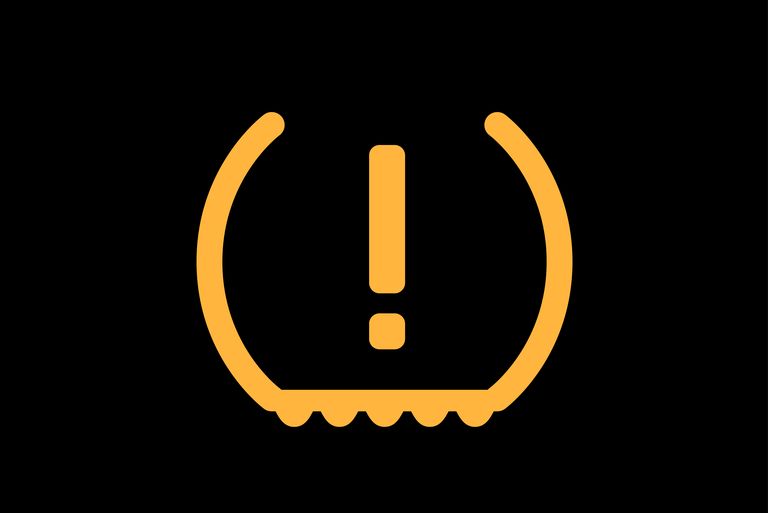
This light looks like a circle with a flat bottom and has an exclamation point in the center. In modern vehicles, you can check the tire pressure with the display or dashboard. However, older models will require you to manually check the pressure yourself. It’s important to keep all your tires at the correct pressure levels to ensure longer lasting tires and better performance. Check your tire pressure, and if the pressure levels are okay and you still see the light stay on after a few minutes, it may mean your tire has a leak or other issues.
Brake System Light
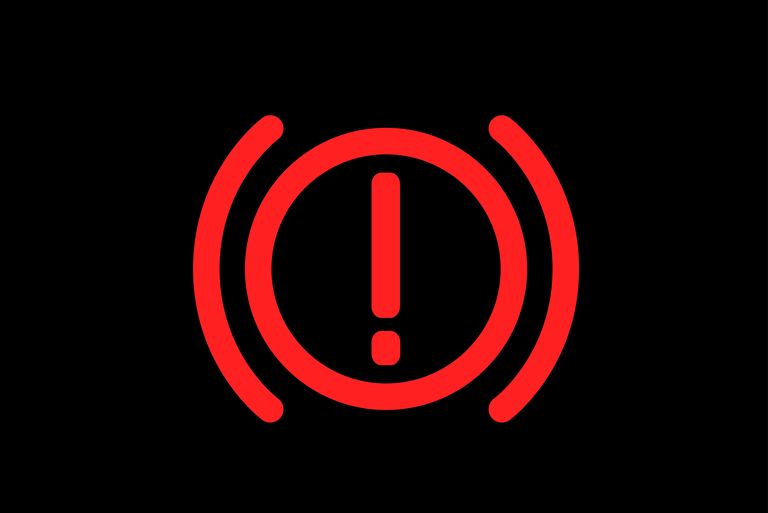
This light looks like a circle with an exclamation point in the center that’s surrounded by parentheses. This light can turn on if the driver tries to pull away with the emergency brake still engaged, or it could be a more serious problem with worn brake pads, low brake fluid, or other such issues. Braking is a crucial aspect of driving, so be mindful of this warning light and be sure to have your vehicle checked out by a service technician if the light turns on and you’re sure the emergency brake is off.
Traction Control Light
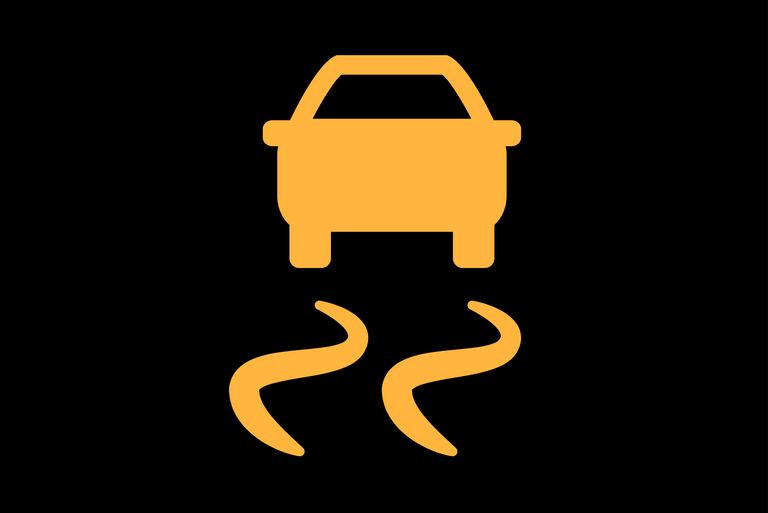
This light looks like the back of a car with curvy lines behind it. This light turns on to warn you that you are experiencing a lack of traction which can lead to slipping and sliding across the road, and activates a system to help combat that. This is most common when you are in rain or snow, and it simply means that the traction control system is engaged. You only need to worry about this light if you are on a dry road and aren’t slipping, which could mean your sensors aren’t working properly.
Airbag Warning Light

This light looks like a person in a seat with a large circle in front of them. This light usually turns on when you first start your car, but if it stays on, it could mean you have an issue with one of your airbags. This won’t damage your car if ignored, but it puts you at great risk if you do not get it checked out. You DO NOT want there to be any issues with your airbags when you get in an accident. Taking care of this warning light as soon as it comes on can save your life in an accident.
Other Lights
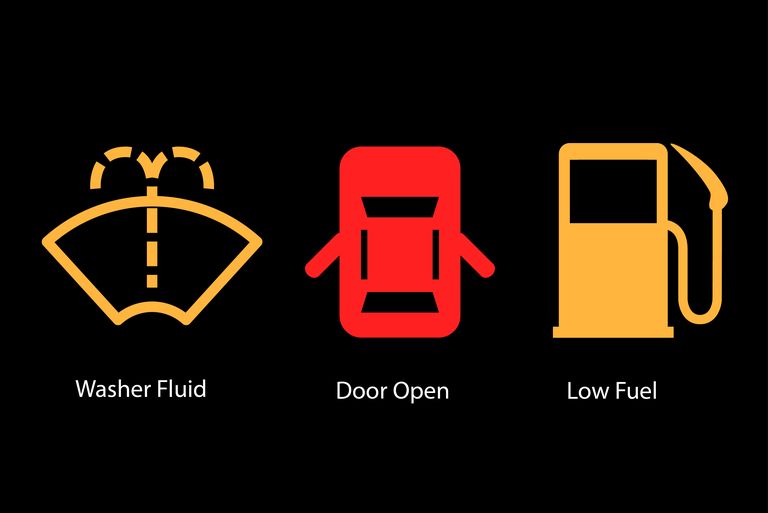
The other lights you should familiarize yourself with are pretty straight forward. The Washer Fluid light, which looks like a windshield with some water being sprayed on it, simply means you are running out of washer fluid. The Door Open light looks like a door, or looks like a vehicle with it’s doors open. This is self explanatory and it’s wise to not drive when this light is on. Low Fuel is also self explanatory, and this icon just looks like a fuel tank. This simply means that you are running low on fuel and should head to the nearest gas station lest you get stranded in the middle of the road.
That’s all the tips for today. If you wish to learn more about your vehicle’s warning lights, or you are experiencing issues with them, schedule an appointment with our expert service technicians today!